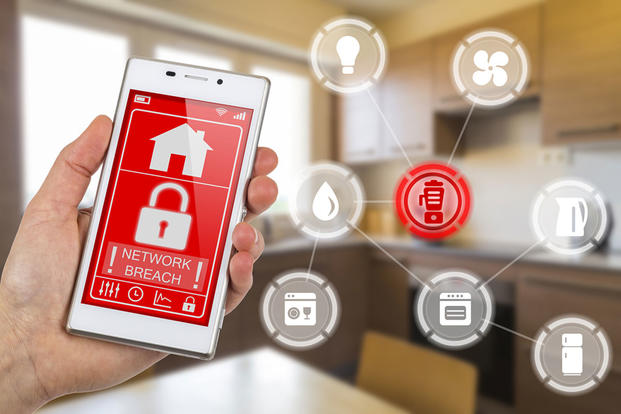People go to great lengths to protect their homes from external, tangible threats. Installing a connected home security system is one effective way in which homeowners are safeguarding their homes from unwelcome intruders. But with these advancements in technology comes some risk: We’ve all heard the stories about hackers and how they can go after our precious data. This is not only true for our computers, but for anything connected to the network within our homes.
However, with a few simple steps, you can help to thwart hackers and ensure that your data is protected, while your home security features are working to their potential.
Change the Default Name and Password of Your Router
Your router has a default name and password. In many cases, we log in once and tell our systems to remember that information so we never need to enter it again. Believe it or not, you can access many routers simply by entering "admin" for the username and "password" for the—you guessed it—password. Even those that aren't so painfully obvious often have their administrative passwords listed on the internet. Change both the username and password of your router to something unique.
Strengthen Your Password
The traditional password choices are easy to remember. While that's understandable, using your child's name or the street you grew up on is dangerous. This information can easily be found online, but a simple brute-force attack (where the hacker uses an automated program to guess your password) can crack your security in a matter of hours. Your password should follow a few guidelines:
- 12 characters minimum
- Includes numbers, symbols, and both upper and lower-case letters
- No words from the dictionary
- No obvious substitutions (Don't use "p4ssw0rd" instead of "password," for instance.)
That said, "!5tR0nGP455w0Rd4m3" isn't a great choice for a password, either. Think of this advice, with the words in this order: "strong password for me." Try to randomize your password as much as possible while still being able to remember it. If you aren't sure how strong your password is, HowSecureIsMyPassword calculates how long it would take to guess a password through traditional hacking methods.
Keep Your Firmware Up To Date
Hackers routinely take advantage of unpatched security flaws to gain access to systems. In return, companies search for these flaws and patch them with firmware updates. Firmware is a type of software that is permanently installed in your device, but it can be updated and changed when needed. By ensuring your router (and all other smart devices in your home) are routinely updated, you reduce the chance a hacker can gain access to your devices.
Enable automatic updates on your devices. If you can't, keep the manuals somewhere safe so you can refer back to the update procedures. Most devices will tell you when an update is available, but it's a good idea to take five minutes once per month to search for the most recent update.
Enable Router Encryption
When your router is encrypted, the data sent over your network is safe. Even if a hacker were to somehow gain access to your home network, the information would be scrambled; the hacker would be unable to access any of the information unless he or she had a "key" to decode the data.
The three main types of router encryption are WPA, WPA2, and WEP. WPA2 is the latest and most secure version of router encryption and should always be the type you choose. Using anything other than the most secure version of software opens your network to attack.
To check what kind of encryption your router is using, go into the "View Wireless Connections" section of your computer. Exactly where this information is located depends on your operating system. Beside the name of your network, you should see "Security Enabled Wireless Network (WEP)," or something similar if on Windows. If you're using a Mac, the network name will just show a lock symbol.
To change your encryption, you need to log into the router itself. How to do this varies on the make of your router. Once you log into your router, find the "Security" or "Encryption" tab and select the security type you would like to use. This will require you to enter a new password, so make it a strong one using the suggestions above.
Check Access Logs
Although checking your access logs sounds like something it would take a techno-guru to do, it's simple. The first step is to go to "WhatIsMyIP" and write down that number. Your IP address is based on your geographic location and is unique to your home. When you check the access logs on your security camera, network, and other devices, you can see the IP address that checked them.
If you see an unfamiliar IP address, it means someone has accessed the security system outside of your home. Of course, this doesn't mean you've been hacked; if you use public Wi-Fi or check your security system from a friend's house, that IP address will be registered in the logs.
Take these easy steps to safeguard your home network from online attacks. Having a state-of-the-art home security system is worth protecting—so it can do its job of protecting your home in turn.
Patrick Hearn is a technology writer for XFINITY Home. When not hard at work, he can be found searching for the best cup of coffee Atlanta has to offer or on the tennis court improving his forehand.




